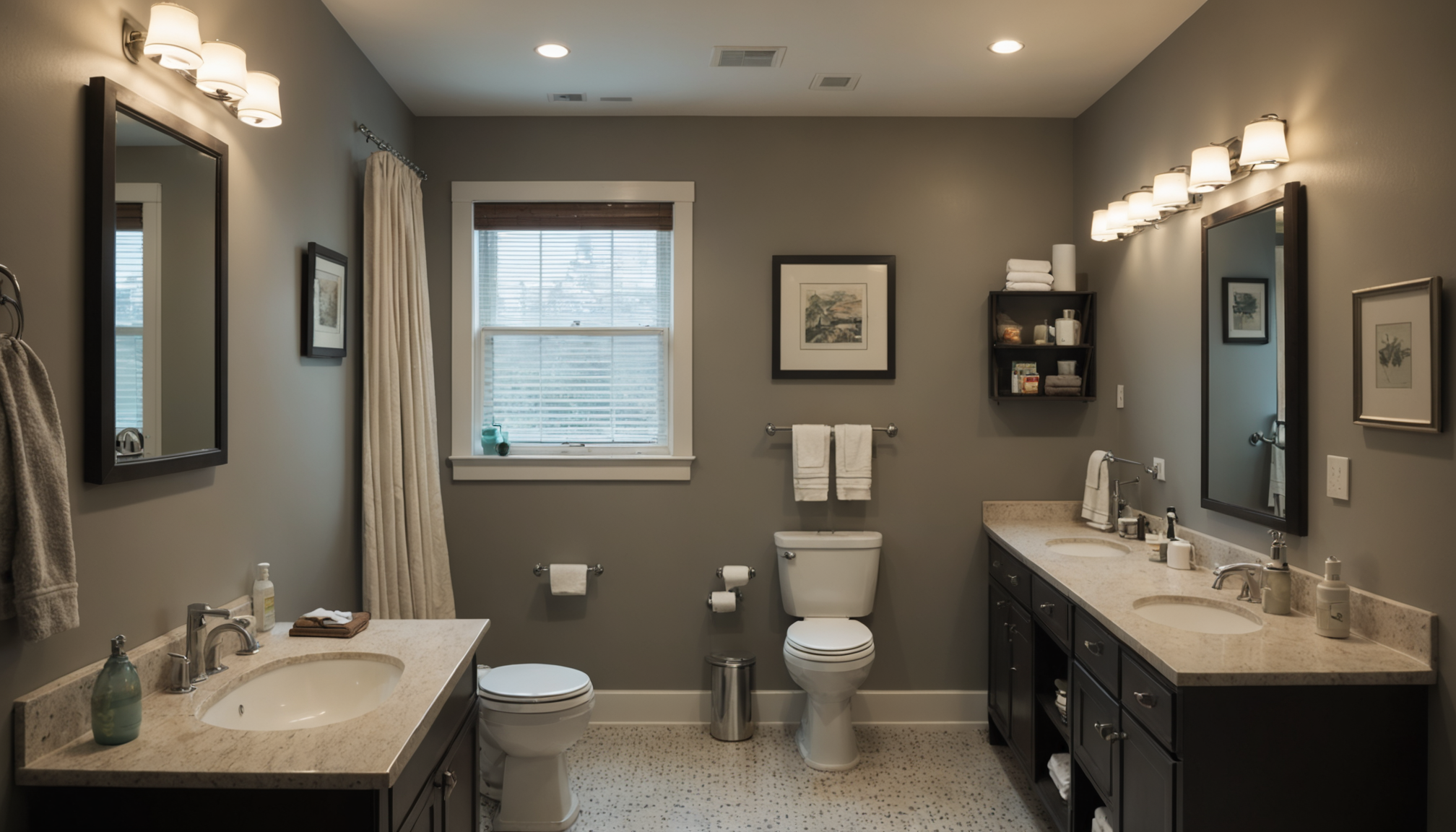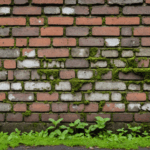When embarking on a bathroom renovation journey, the first critical step is thoroughly assessing your current bathroom layout. This evaluation will not only inform your design decisions but also help avoid costly mistakes and ensure that the new layout meets your functional needs and aesthetic preferences.
Begin by examining the existing space, considering both strengths and weaknesses. Note the positions of key elements such as the toilet, bathtub, shower, and vanity. Take measurements of the room, noting the dimensions of each fixture and the distance between them. This will help you understand the space limitations and potential opportunities to optimize the layout. It’s essential to identify what works well and what aspects need replacement or improvement, such as insufficient storage, poor lighting, or awkward fixture placement.
Consider the flow of movement within the bathroom. Does the current configuration allow for easy access, or do certain elements obstruct pathways? An effective layout should facilitate a natural and efficient flow, contributing to a user-friendly space. Identify any areas that feel cramped or underutilized, as these will be prime candidates for improvement in your new design.
Once you have a clear understanding of the physical layout, it’s time to consider the utility connections. An important part of this assessment involves mapping out the existing plumbing and electrical lines. Verify the locations of the water supply lines, drainage, and electrical outlets to understand if they align with your intended design or if you’ll need to modify them. Keep in mind that significant modifications might require the assistance of a professional plumber or electrician, especially if your plans include relocating major fixtures.
Ventilation is another critical aspect that often goes unnoticed in initial assessments. Evaluate the existing HVAC provisions, such as windows or exhaust fans, which play a vital role in maintaining a moisture-free environment. Inadequate ventilation can lead to mold and mildew, compromising not only the bathroom’s aesthetic appeal but also the structural integrity over time. Ensure that any new layout addresses these ventilation needs effectively.
Proper evaluation of your current bathroom layout allows for more informed decisions that can save both time and resources in the long run. Additionally, consider how potential changes might integrate sustainable or eco-friendly solutions. For example, you might opt for water-saving fixtures or energy-efficient lighting, enhancing both the environmental impact and the operational cost-efficiency of your bathroom. Below is a comparative table to help you evaluate key aspects in the existing layout and what you might aim to achieve in your newly designed space.
| Aspect | Current Layout | New Layout Goals |
| Fixture Placement | Cramped around door | Enhanced flow and accessibility |
| Storage | Limited cabinet space | Maximize storage with built-ins |
| Ventilation | Inadequate exhaust fan | Improved air circulation/HVAC |
| Plumbing | Fixed to current layout | Flexible to accommodate changes if needed |
| Eco-friendly Features | Standard fixtures | Low-flow, sustainable options |
By systematically assessing each component of your existing bathroom layout, you’re laying the groundwork for a successful renovation. This meticulous approach allows for a thorough appreciation of what you have and a clear vision of what you wish to achieve in your revamped space.
selecting fixtures and fittings
When it comes to choosing the right fixtures and fittings for your bathroom renovation, there are critical decisions to make that will influence both the style and functionality of the space. Selecting the right elements involves balancing your aesthetic preferences with practicality and budget constraints. Here’s how to ensure you make the best choices:
- Determine Your Style and Needs:
- Start by defining the overall style you want for your bathroom. Whether it’s modern, classic, rustic, or something eclectic, your fixtures should align with this vision.
- Consider the specific needs of those using the bathroom. Features such as integrated seating in showers, easy-grip faucets, or heightened vanities may be necessary for people with mobility issues.
- Establish a Budget:
Decide on an overall budget for the fixtures, factoring in quality, longevity, and installation costs. Investing in durable, quality products can save money in the long term by reducing the need for replacements.
- Choose the Right Sink and Vanity:
- Take into account the size and layout of your bathroom. A pedestal sink might be perfect for a small bathroom, while a double vanity could be more suitable for a larger space.
- Consider storage needs. Vanities with drawers or cabinets offer valuable storage that can help keep the bathroom tidy.
- Decide on the Bathtub and Shower Specifications:
- Consider if you want to include a bathtub, shower, or both. Space limitations might dictate a combination shower/tub unit.
- Evaluate the benefits of different types of showers, such as rain showers, handheld options, or multi-jet setups for a spa-like experience.
- If eco-friendliness is a priority, look for low-flow showerheads and water-efficient bath fixtures.
- Select Faucets and Showerheads:
Look for fixtures that complement your chosen style but also consider single-handle designs for ease of use and installation. Pay attention to the water flow rate to ensure eco-efficiency without sacrificing performance.
- Lighting Choices:
- Ample lighting is essential for both functionality and mood setting. Consider a combination of ceiling lights, vanity lighting, and accent lights.
- Energy-efficient LED options can enhance the eco-friendly aspect of your bathroom and align with smart lighting systems for added convenience.
- Focus on Small Details:
- Do not overlook the importance of accessories like towel bars, toilet paper holders, and hooks. These should match your primary fixtures to create a cohesive look.
- Choose quality materials that are resistant to moisture and frequent use, such as stainless steel or chrome finishes.
- Plan for Future Maintenance:
Select fixtures and fittings that are easy to clean and maintain. Consider finishes that resist spots and fingerprints to keep the bathroom looking fresh with minimal effort.
Taking the time to thoughtfully select your fixtures and fittings will not only enhance the aesthetic appeal of your bathroom but will also ensure a space that meets the functional needs of your household while being sustainable and cost-effective over time.
choosing the right materials
Choosing the right materials for your bathroom renovation is a crucial step that can significantly influence both the aesthetic and practical outcomes of your project. The materials you select must not only align with your personal style but also withstand the unique demands of a damp environment. Here’s how to navigate this essential part of a bathroom remodel:
Durability is Key
Bathrooms are prone to moisture, fluctuations in temperature, and constant use, making durability a paramount consideration. By choosing moisture-resistant and robust materials, you can extend the lifespan of your renovation. Options like porcelain or ceramic tiles for walls and floors resist water penetration, making them ideal for wet environments. Alternatively, consider luxury vinyl planks, which offer the beauty of natural wood while providing protection against moisture damage.
Embrace Eco-Friendly Options
Opting for sustainable materials is not only good for the environment but can also improve the air quality and overall healthiness of your home. Bamboo is a great renewable option for flooring or cabinetry, offering a sleek, modern look with the added benefit of being eco-friendly. Similarly, recycled glass tiles can add a unique and elegant finish to your walls, contributing to sustainability while reducing waste.
The Right Countertop Makes a Difference
Selecting the right countertop material is essential for both functionality and style. Granite and quartz are popular choices due to their durability and low maintenance, resisting stains and scratches. If you prefer a more natural look, marble can be a beautiful choice, but be mindful of its susceptibility to etching and staining. Investing in a quality countertop ensures you won’t need to replace it frequently, saving both time and money over the long term.
Waterproof Paint is a Must
Using waterproof or mold-resistant paint can protect walls from the high humidity levels in a bathroom. These paints have antimicrobial properties that help prevent mold and mildew growth, maintaining the health of your space. It’s a simple option that aids in curbing moisture-related issues effectively.
Consider Impact on HVAC
Materials that influence temperature regulation, like tile or stone, can affect how much energy is required by your HVAC system. These materials naturally retain coolness, which can be beneficial in warmer climates but might necessitate additional heating solutions in cooler environments. Align your material choices with your region’s climate to optimize energy efficiency.
Blend Function with Fashion
While aesthetic appeal is important, never sacrifice functionality. For the bathtub or shower, choose materials that provide both slip resistance and a touch of luxury. Natural stone can create a spa-like atmosphere, but textured tiles are a practical choice for safety. It’s essential to strike the right balance between beauty and practicality.
Choosing materials thoughtfully involves considering their environmental impact, durability, and aesthetic potential. This mindful approach ensures that your bathroom renovation not only meets current needs but remains resilient and attractive for years to come.
hiring professionals vs DIY
When deciding whether to replace your bathroom through hiring professionals or opting for a DIY approach, it’s important to weigh both the advantages and potential drawbacks of each option. This decision can significantly impact your renovation experience, as well as the quality and longevity of the finished project.
Hiring professionals often offers the advantage of expertise and experience. Seasoned contractors bring a wealth of knowledge to the table, ensuring every aspect of your bathroom renovation is executed with precision and adherence to building codes. Professionals can handle complex tasks such as plumbing and electrical work, which not only require specialized skills but also must comply with safety regulations. By hiring a competent team, you can minimize the risk of errors that can lead to costly repairs in the future.
Additionally, working with professionals means you can often expect the project to be completed within a set timeline. Experienced contractors are adept at coordinating various aspects of the renovation process, from sourcing materials to scheduling subcontractors, allowing for a smoother and more efficient workflow. This can be especially beneficial if you have a limited timeframe or if the renovation needs to be synchronized with other projects within your home.
However, the professional route typically comes with a higher price tag. Labor costs can significantly increase your budget, sometimes making this option less appealing for those looking to cut expenses. On the flip side, DIY enthusiasts may find satisfaction in creating a personalized space while keeping expenditures in check. Taking on DIY projects can also enhance your skills and provide a sense of accomplishment when viewing the finished result.
Nonetheless, DIY bathroom renovations require a realistic assessment of your capabilities. It’s crucial to possess the necessary skills and have access to the proper tools. For instance, installing new plumbing or modifying the HVAC system may prove challenging without professional training. Mistakes in these areas can result in substantial damages, negating any initial cost savings. Therefore, for major overhauls or installations that could impact crucial systems like the HVAC, relying on a professional might be the more prudent choice, even if you plan to tackle some simpler tasks yourself.
An attractive middle ground might be a hybrid approach: hire professionals for the more complex jobs while handling straightforward tasks on your own. For instance, let professionals manage plumbing and electrical work, while you focus on painting, tile work, or installing eco-friendly fixtures. This allows you to benefit from expert craftsmanship while still enjoying the creative aspects and potential cost savings of a DIY project.
In either case, a well-thought-out plan is essential. Whether you’re coordinating with a contractor or managing your project, having a clear timeline and budget will help guide decisions and minimize stress. Remember, the key is to achieve a bathroom renovation that is not only visually appealing and functional but also completed safely and efficiently.
sustainable bathroom renovation options
When aiming to create a more sustainable bathroom, implementing eco-friendly renovation options can significantly reduce the environmental impact of your project while promoting long-term savings. The key to a sustainable bathroom renovation lies in selecting materials and fixtures that conserve resources, minimize waste, and improve energy efficiency.
Start with water conservation, which is crucial in any eco-friendly renovation. Look for water-saving fixtures such as low-flow faucets, showerheads, and dual-flush toilets. These can significantly reduce water usage without compromising performance, as they are designed to provide sufficient pressure while using less water. By replacing older, inefficient models with these optimized alternatives, you manage to cut down on water bills and lessen your environmental footprint.
The choice of materials also plays a significant role in sustainability. Opt for recycled or responsibly sourced materials wherever possible. Reclaimed wood, recycled glass tiles, and bamboo flooring are excellent examples of eco-friendly choices that do not sacrifice aesthetics. These materials not only reduce your carbon footprint but also create a unique and natural visual appeal in your bathroom.
Energy efficiency is another critical aspect of a sustainable bathroom renovation. Incorporating energy-saving lighting, such as LED fixtures, can considerably lower the electricity consumption of your bathroom. These lights consume less energy, have a longer lifespan, and help create a functional and inviting ambiance. Additionally, installing energy-efficient ventilation systems will ensure adequate airflow, reducing the risk of mold and mildew while promoting a healthier space.
Consider integrating smart home technology to monitor and optimize energy and water use. Systems that allow you to control lighting and heating remotely can further boost the efficiency of your bathroom, adapting its functions to your lifestyle while curbing unnecessary consumption. Thermal insulating materials can also improve energy efficiency by maintaining a balanced temperature, which is particularly useful during extreme weather conditions, leading to reduced reliance on your HVAC system.
Lastly, choose paints, sealants, and finishes low in volatile organic compounds (VOCs) to improve indoor air quality. These eco-friendly products are free of harmful chemicals found in conventional finishes, promoting a healthier environment for you and your family.
By making thoughtful choices in your bathroom renovation, you’re not only creating a comfortable and stylish space but also contributing positively to the environment. These sustainable options ensure that the bathroom is efficient and responsible, offering a refreshing space that aligns with eco-conscious living.


